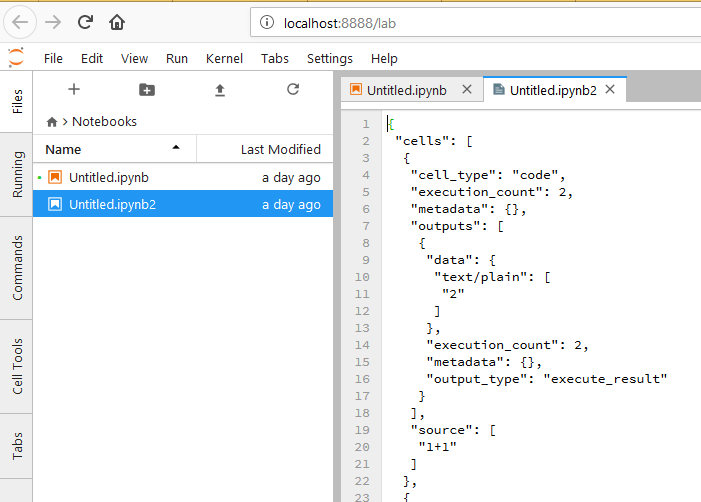

- #Get jupyterlab extensions how to#
- #Get jupyterlab extensions install#
- #Get jupyterlab extensions update#
- #Get jupyterlab extensions code#
JupyterLab extensions provide nearly every function in JupyterLab, including notebooks, document editors and viewers, code consoles, terminals, themes, the file browser, contextual help system, debugger, and settings editor. The JupyterLab application is comprised of a core application object and a set of extensions. Development workflow for source extensions.Level components that can be used are text editors, terminals, notebooks, interactive widgets,įilebrowser, renderers for different file formats that provide access to an enormous ecosystemĬomplementary to these examples, you can rely on the official JupyterLab documentation. New powerful application that can be deployed remotely to many users. JupyterLab can be used as a platform to combine existing data-science components into a
#Get jupyterlab extensions install#
Once your extension is published on (outside of this scope), you can install it This is possible thanks to a tool called playwright. The tests are defined in the ui-tests subfolder within each example. Those tests are emulating user action in JupyterLab to check the extension is behaving as expected. The installation is checked by listing the installed extension and running JupyterLab with the helper python -m jupyterlab.browser_check The examples are automatically tested for:Ĭonfiguration files are compared to the reference ones of the hello-world example
#Get jupyterlab extensions update#
If you make changes to the source code, ensure you update the README and run jlpm embedme from the root of the repository to regenerate the READMEs. We are using embedme to embed code snippets into the markdown READMEs. Then in terminal 2, start JupyterLab with the watch flag: jupyter lab -watchįrom there, you can change your extension source code, it will be recompiled,Īnd you can refresh your browser to see your changes. In terminal 1, go to the extension folder and run the following: jlpm watch If you want to develop and iterate on the code, you will need to open 2 terminals. You can now start JupyterLab and check if your extension is working fine: jupyter lab hello-world, and run the following commands: pip install -e. Go to the example directory you want to install, e.g. To rebuild all the extensions: jlpm build-ext Develop and Use the Examples Build and Install all Examples at once jlpm The previous command will use the environment.yaml file as requirements for the environment. You can create a conda environment to get startedĪfter cloning this repository. These examples are developed and tested on top of JupyterLab. JupyterLab you may find it easier to understand than pure JavaScript if you have aīasic understanding of object oriented programming and types. Writing an extension requires basic knowledge of JavaScript, Typescript and potentially Python.ĭon't be scared of Typescript, even if you never coded in TypeScript before you touch Use Signals to allow Widgets communicate with each others.Īdd a new button to the notebook toolbar.Īdd a new Widget element to the main window. server) and frontend parts.Ĭreate and use new Settings for your extension. Interact with a kernel from an extension.Ĭreate a minimal extension with backend (i.e. Set up the development environment and print to the console. Put widgets at the top of a main JupyterLab area widget.Īdd a new button to an existent context menu.Ĭreate new documents and make them collaborative. Register commands in the Command Palette.

You are welcome to open any issue or pull request. Browse the previews below or skip them and jump directly to the sections for developers. We have structured the examples based on the extension points.

#Get jupyterlab extensions how to#
You may find it easier to learn how to create extensions by examples, instead of going through the documentation. Note that the 1.x and 2.x branches are not updated anymore. If you would like to use the examples with JupyterLab 1.x, check out the 1.x branch. If you would like to use the examples with JupyterLab 2.x, check out the 2.x branch. The examples currently target JupyterLab 3.1 or later. # build the TypeScript source after making changes # install your development version of the extension with JupyterLab The goal of this repository is to show how to develop extensions for JupyterLab, presented as short tutorial series.Ĭonda activate jupyterlab-extension-examples Community Guidelines and Code of Conduct.


 0 kommentar(er)
0 kommentar(er)
